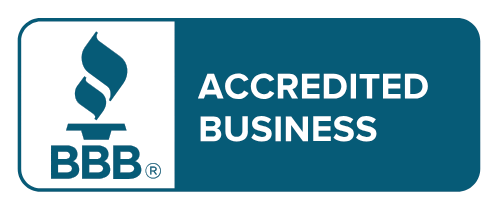Rainwater Harvesting Systems: Charleston's Water Solution
Key takeaways:
- Rainwater harvesting systems collect and store rainwater for later use
- These systems can significantly reduce water bills and conserve municipal water supplies
- Charleston's climate is ideal for rainwater harvesting, with an average annual rainfall of 51 inches
- Harvested rainwater can be used for irrigation, toilet flushing, laundry, and other non-potable purposes
- Proper system design and maintenance are crucial for optimal performance and water quality
- Local regulations and permits may apply when installing a rainwater harvesting system
Rainwater harvesting systems are an effective way to collect and store rainwater for later use, providing a sustainable water source for Charleston homeowners. With the city's abundant rainfall and growing focus on water conservation, these systems offer numerous benefits for both residential and commercial properties.
Understanding rainwater harvesting systems
Rainwater harvesting is the process of collecting, filtering, and storing rainwater from rooftops, land surfaces, or other catchment areas. This ancient practice has gained renewed interest in recent years as a means to reduce reliance on municipal water supplies and lower water bills.
Components of a rainwater harvesting system
A typical rainwater harvesting system consists of several key components:
- Catchment area: Usually the roof of a building, where rainwater is collected
- Gutters and downspouts: Direct water from the catchment area to the storage tank
- First flush diverter: Removes initial runoff containing debris and contaminants
- Filtration system: Removes remaining impurities from the collected water
- Storage tank: Holds the harvested rainwater for future use
- Pump: Distributes water from the tank to points of use
- Distribution system: Pipes and fixtures that deliver water to its intended use
Types of rainwater harvesting systems
There are two main types of rainwater harvesting systems:
- Above-ground systems: These feature visible storage tanks placed on the ground or elevated on platforms. They are easier to install and maintain but may take up more space on your property.
- Underground systems: These systems store water in buried tanks, preserving yard space and protecting water from sunlight and temperature fluctuations. However, they can be more expensive to install and harder to access for maintenance.
Benefits of Rainwater Harvesting in Charleston
Charleston's climate is particularly well-suited for rainwater harvesting, with an average annual rainfall of 51 inches. This abundant precipitation makes it possible for homeowners to collect significant amounts of water throughout the year.
Water conservation and cost savings
By using harvested rainwater for non-potable purposes like irrigation, toilet flushing, and laundry, homeowners can significantly reduce their reliance on municipal water supplies. This not only helps conserve local water resources but can also lead to substantial savings on water bills.
Reduced stormwater runoff
Rainwater harvesting systems can help manage stormwater runoff, a significant concern in Charleston due to its low-lying coastal location. By capturing rainwater that would otherwise flow into storm drains, these systems can help reduce flooding and erosion while also easing the burden on the city's stormwater infrastructure.
Environmental benefits
Using harvested rainwater reduces the demand for treated municipal water, which requires energy and chemicals to process. This can lead to a lower carbon footprint and reduced strain on local water treatment facilities.
Designing a Rainwater Harvesting System for Your Charleston Home
When planning a rainwater harvesting system for your Charleston home, several factors need to be considered to ensure optimal performance and compliance with local regulations.
Calculating your water needs
The first step in designing your system is to determine how much water you need to collect. This will depend on your intended uses for the harvested rainwater and the size of your household or property.
Sizing your storage tank
The size of your storage tank should be based on your water needs, available catchment area, and local rainfall patterns. A professional can help you calculate the appropriate tank size for your specific situation.
Choosing the right materials
In Charleston's humid climate, it's important to choose materials that can withstand moisture and resist corrosion. Tanks made of food-grade plastic, fiberglass, or concrete are popular choices for their durability and resistance to algae growth.
Integrating with existing systems
Your rainwater harvesting system should be designed to work seamlessly with your home's existing plumbing and irrigation systems. This may require the installation of separate pipes and fixtures for harvested rainwater use.

Installing a Rainwater Harvesting System
While some homeowners may choose to install a basic rainwater harvesting system themselves, it's often best to work with a professional contractor, especially for larger or more complex systems.
Site preparation
Proper site preparation is crucial for the success of your rainwater harvesting system. This may include leveling the ground, creating a stable foundation for your tank, and ensuring proper drainage around the system.
Tank installation
Whether you choose an above-ground or underground system, proper tank installation is essential. This includes ensuring the tank is level, secure, and properly connected to your gutters and distribution system.
Filtration and pump setup
Installing an effective filtration system and pump will help ensure the quality and usability of your harvested rainwater. The specific components needed will depend on your intended water uses and local water quality regulations.
System testing and commissioning
Once your system is installed, it should be thoroughly tested to ensure all components are functioning properly and there are no leaks or other issues.
Maintaining Your Rainwater Harvesting System
Regular maintenance is essential to keep your rainwater harvesting system functioning efficiently and to ensure the quality of your harvested water.
Regular inspections
Conduct visual inspections of your system components regularly, looking for signs of wear, damage, or leaks. Pay particular attention to gutters, downspouts, and tank openings to ensure they remain clear of debris.
Cleaning and disinfection
Periodically clean your storage tank and filtration system to prevent the buildup of sediment and algae. In some cases, you may need to disinfect your system, especially if you plan to use the water for potable purposes.
Water quality testing
If you intend to use your harvested rainwater for drinking or cooking, regular water quality testing is essential to ensure it meets safety standards.
Legal Considerations and Permits
Before installing a rainwater harvesting system in Charleston, it's important to be aware of local regulations and obtain any necessary permits.
Local regulations
Check with the Charleston Water System and the Charleston County Building Inspections Department for specific regulations regarding rainwater harvesting systems. These may include restrictions on system size, placement, and water use.
Permitting process
Depending on the size and complexity of your system, you may need to obtain permits before installation. This typically involves submitting detailed plans of your proposed system for review and approval.
Cost Considerations
The cost of installing a rainwater harvesting system can vary widely depending on the size and complexity of the system. Here's a breakdown of potential costs:

Keep in mind that these are rough estimates, and actual costs may vary. It's best to get quotes from several local contractors for a more accurate estimate.
Return on Investment
While the initial cost of a rainwater harvesting system can be significant, many homeowners find that the long-term savings on water bills make it a worthwhile investment. The time it takes to recoup your investment will depend on factors such as:

Rainwater Harvesting in Action: Charleston Success Stories
- The Charleston County Public Library's Wando Mount Pleasant branch features a 20,000-gallon underground cistern that collects rainwater for irrigation and toilet flushing.
- The South Carolina Aquarium uses a rainwater harvesting system to collect water for its outdoor exhibits and landscaping.
- Several local schools have implemented rainwater harvesting systems as educational tools to reduce water consumption.
These examples demonstrate the growing adoption of rainwater harvesting in Charleston and its potential for both residential and commercial applications.
Integrating Rainwater Harvesting with Other Sustainable Practices
Rainwater harvesting can be part of a broader approach to sustainable living in Charleston. Consider combining your system with other eco-friendly practices such as:
- Native landscaping to reduce water needs
- Greywater recycling for additional water savings
- Solar panels to power your rainwater harvesting pump
- Permeable paving to further reduce stormwater runoff
By implementing these practices together, you can create a more resilient and sustainable home that's well-suited to Charleston's unique climate and environment.
Conclusion
Rainwater harvesting systems offer a practical and sustainable solution for Charleston homeowners looking to conserve water, reduce their environmental impact, and save on water bills. With proper design, installation, and maintenance, these systems can provide a reliable source of water for various non-potable uses while helping to manage stormwater runoff in our low-lying coastal city.
As Charleston continues to grow and face water management challenges, rainwater harvesting represents an important tool for building a more sustainable and resilient community. By considering a rainwater harvesting system for your home, you can play a part in this effort while enjoying the benefits of a more self-sufficient and eco-friendly household. For more information, you can visit our website or contact us.






